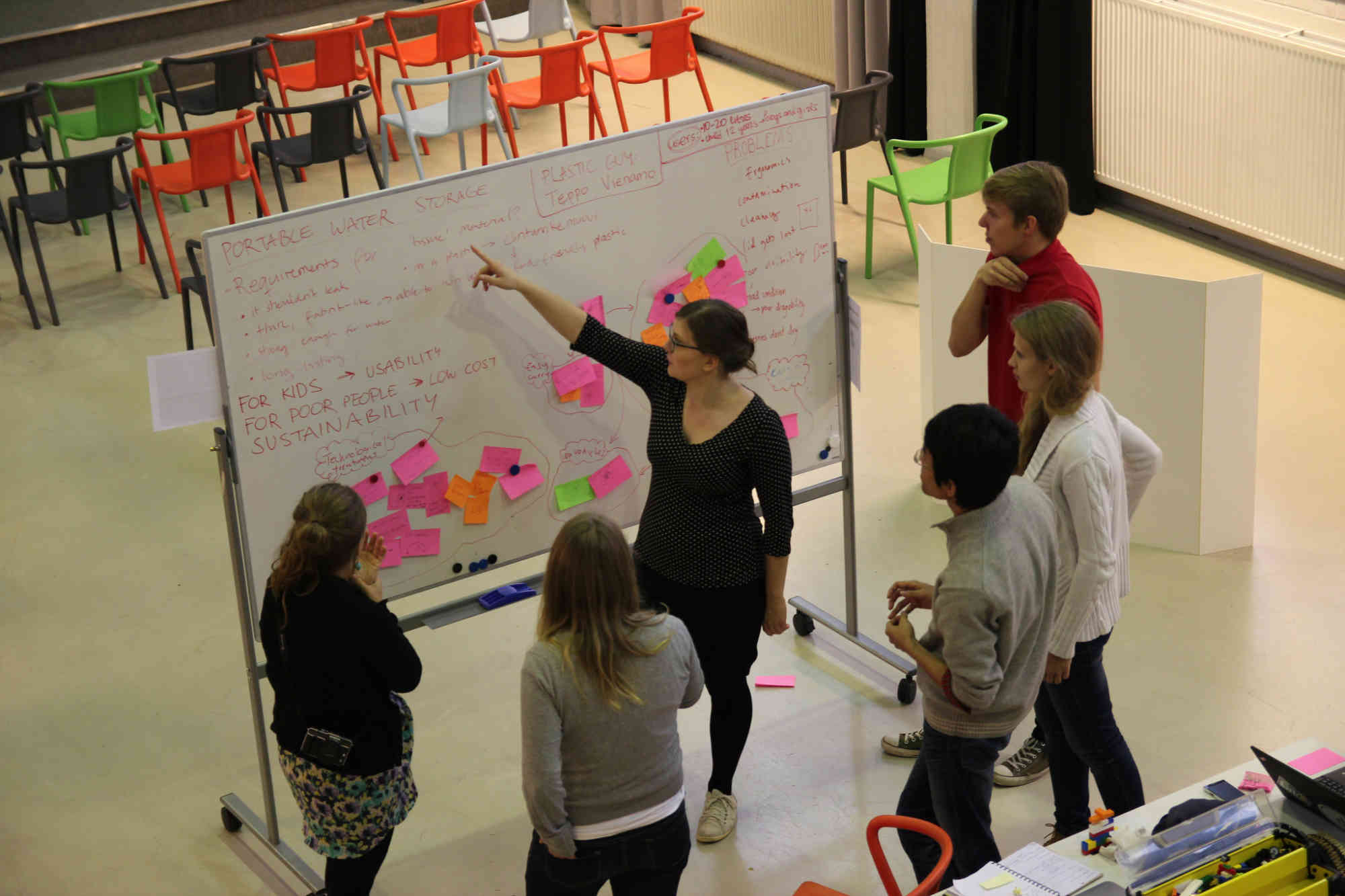Disruptive innovations are challenging traditional industries and established players to seek new ways to enhance their internal innovation capabilities. Implementing design thinking into organizational practices can help bring users and their real needs to the center of the company, but remember to take into account varying perceptions across the organization, implement incrementally and secure mandate from management.
Nowadays, traditional industries are being increasingly disrupted by new and innovative outside-the-box ideas, such as Apple changing the market of electronics in 2007 with iPhones – a novel combination of a phone, internet access and computer. Furthermore, the smartphone changed not only the settings of phone sales, but also introduced a new business model for new mobile software development. To succeed amidst disruptions, large and established organizations are forced to rethink their internal innovation activities.
Design thinking can improve organizations’ innovation efforts through a continuous focus on users’ real needs and desires. For example, Jeffery P. Bezons, the CEO of Amazon, highlights how Amazon’s success relies on their customer-obsessiveness as all the plans are created based on the assumption that their customers are continually dissatisfied. However, due to the iterative nature of design thinking, it easily drifts in conflict with pre-defined organizational processes and non-adaptive cultural pressure.
Analyzing designer interviews in a Fortune 500 company for my master’s thesis, I found designers struggling with structural diversity across the organization and general resistance towards changes in trying to extend the role of design in the engineering-driven company. Three strategies can help to overcome the tensions between existing practices and design thinking:
1. Examine the perceptions of design thinking first – do not make assumptions!
- Before initiating the change, it is crucial to soundly examine the current dynamics and perception of design thinking in different parts of the organization. Design thinking can be perceived very differently, even within a single organization. Varying maturity of design across the organization requires implementation of alternating practices in different parts of the company. Additionally, the higher we climb in the organizational structure – from lone UX designers to global team leaders -, the more design thinking activities are utilized, the less challenges faced and the more supportive actions implemented, speaking for the importance of positioning change agents high enough in the hierarchy.
2. Implement practices incrementally!
- No matter what kind of design thinking practices are to be implemented, it should be done step-by-step. As small changes are easier and quicker to internalize, incremental implementation is efficient and minimize the resistance barrier among non-designers. Incremental changes show their value to non-designers quickly, and positive hands-on experience with design thinking showing immediate benefits was perceived as the most efficient way for showcasing the benefits of design thinking to non-designers. Once non-designers notice the value brought by the small changes, they become more open for further changes.
3. Take advantage of managers!
- Managers play a key role in taking organizational change forward, directly and indirectly. With their support, they can create a psychological comfort zone for their employees to try new things out. If employees do not feel clear managerial acceptance towards new practices, they might worry that new practices are perceived as crossing the invisible line and acting against rules. On the other hand, managers’ mandates can be exploited in education efforts as they can pass the practices to their own employees and together think about applications to the specific context they work in.
Martyna Kosmala is a soon-to-be industrial engineer from Aalto University with an experience in product development. She is passionate about helping large organization to acquire innovation capabilities and strengthen their market position. Martyna worked in the Design+ research project as a research assistant, and did her thesis in the project.
is a soon-to-be industrial engineer from Aalto University with an experience in product development. She is passionate about helping large organization to acquire innovation capabilities and strengthen their market position. Martyna worked in the Design+ research project as a research assistant, and did her thesis in the project.
 Aalto DF
Aalto DF